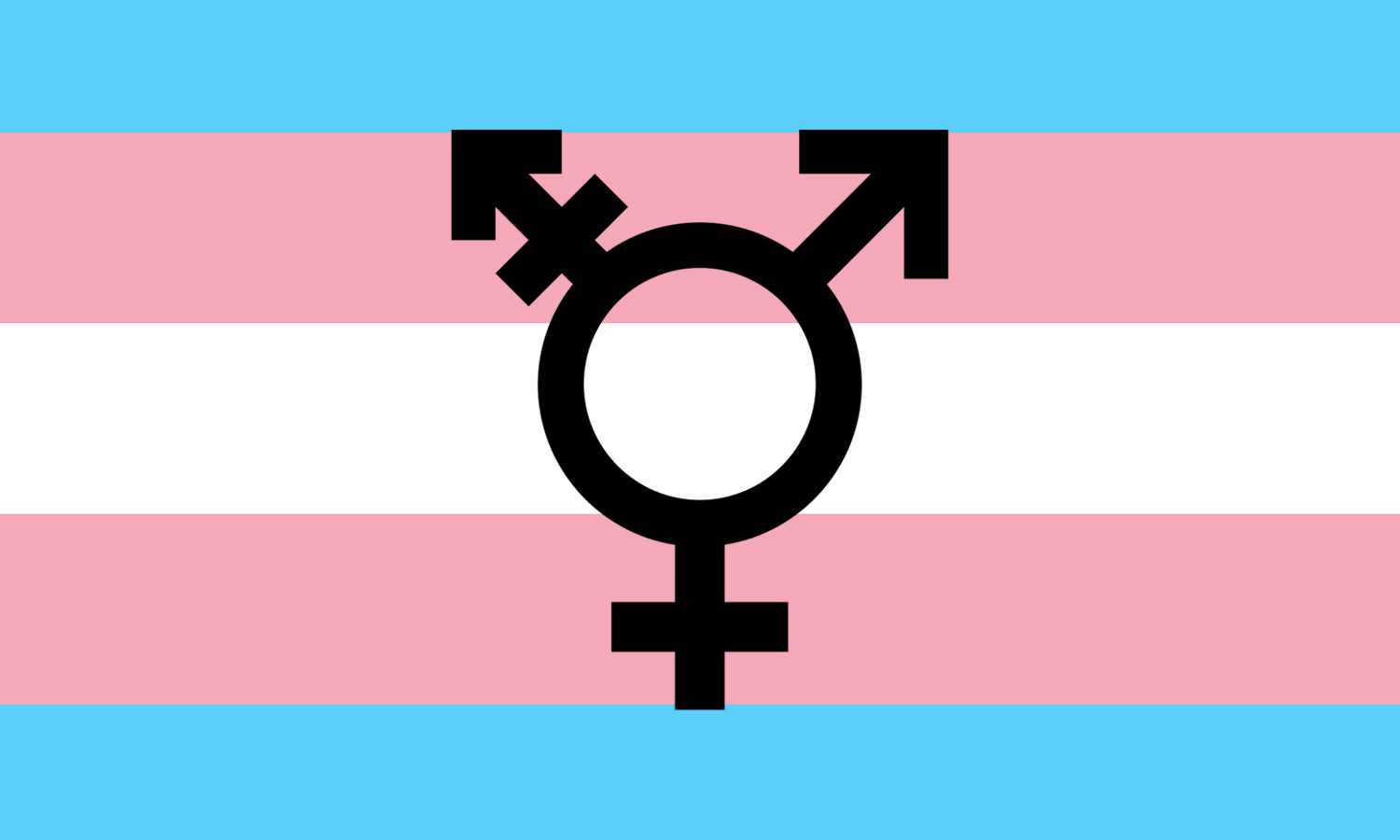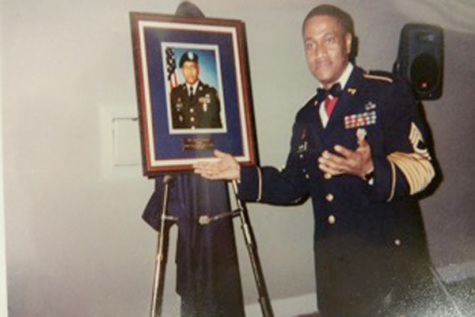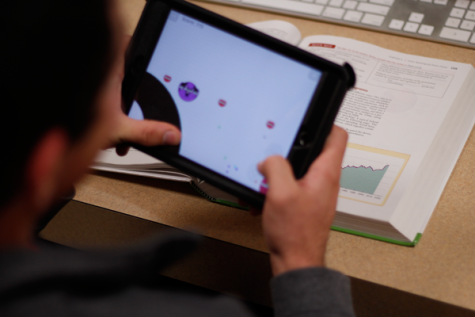Junior Jake Tomme sits nervously on the first day of school as he thinks about how to introduce himself. While he knows exactly how he would like to introduce himself to others, he’s not sure if they would accept the way that he identifies. It should be simple, but the world is not as simple and accepting when it comes to identity. Because before Jake was Jake, he went by the name Audrey.
Tomme identifies as transgender, someone whose gender identity does not correspond to their biological sex assigned at birth. An estimated .3 percent of the United States population identifies as transgender. Although the trans community has gained more recognition and support in the media, challenges are present for students who identify as the opposite gender. Tomme knows he didn’t choose to be transgender.
“It’s not a choice, it’s just something you’re born with,” Tomme said. “While some people in fact do choose the lifestyle or do have it as a phase, a majority do not.”
Childhood
The scene is a familiar one- hospital rooms overflowing with balloons and flowers, happy parents welcoming their new babies into the world. The CDC estimates about 11,000 babies are born everyday in the United States, about four million born every year. Immediately following birth, doctors and nurses announce the sex of the baby with either a “It’s a boy” or “It’s a girl,” ultimately attaching societal expectations of gender to each minutes after they enter the world. However, sex and gender are different terms completely. Sex refers to the classification of male or female based on physical gametes present in an individual while gender refers to the classification of male or female based on mental identification. Tomme was biologically born female, but always knew he was different.
“I guess I knew [I was different] when I started school,” Tomme said. “I always hung out with guys more so than girls, and the friends I had that were girls were all the ‘tomboy’ type.”
Growing up, children constantly learn about the world and themselves. Naturally, every child goes through phases that allow them to discover who they are. Almost all children go through a phase early in their development, usually around the time they are toddlers, where they adopt interests or behaviors that are identified as being of the opposite gender. Whether this be a girl playing with a truck or a boy playing with a doll, it is completely natural as children find their interests. These interests do not give sufficient evidence of being transgender, although excessive insistence of preferences of the opposite gender can be a sign of a child identifying as transgender. Tomme never had a draw to female toys or clothes, even as a young child.
“I didn’t like them,” Tomme said, “but I was scared of getting in trouble so I used them anyway.”
Societal expectations of gender in America has caused controversy in recent years after toys marketed to children today have grown more gender stereotyped than toys in 1950. Judith Elaine Blakemore, the professor of psychology and associate dean of Arts and Sciences for Faculty Development at Indiana University, found through research of stereotyped toys that these gender stereotypes limited children, concluding toys that promoted gender stereotypes were less supportive of optimal development than toys without any gender preference. Sophomore Graham Howe is also transgender and has faced many difficulties At a young age, Howe felt on the outs compared to his peers because of his differing interests than other little girls.
“I didn’t wear dresses,” Howe said. “I would wear my brother’s clothes. Even when I was 6 years old, I would wear my brother’s ninja costumes.”
Coming To Terms and Coming Out
The stress and anxiety of others accepting someone who knows they identify differently is a given, but what is often overlooked is that sometimes those who identify differently have trouble accepting themselves. Although Tomme had a feeling of how he identified at a young age, he still had trouble accepting himself.
“I thought I was odd for feeling that way and that something was wrong with me,” Tomme said.
Howe had the same experience with accepting himself before the start of high school, afraid he would be considered fake if being transgender didn’t necessarily fit him like he thought it would. Howe, however, came to the realization that being male was who he really was and came to accept himself.
“It took a while,” Howe said. “I don’t care what other people say because I’m comfortable with who I am.”
Tomme eventually came to accept himself but next came coming out. Whether it be someone who is gay, bisexual or transgender, “coming out” is the term used when individuals share with friends, family or the world exactly how they identify. Coming out is a chance for people to be open and truthful on their own terms when they feel comfortable and ready.
Tomme managed to keep his identification hidden from his family for his whole school career before the middle of freshman year of high school. His family was ultimately unaware that he identified as a male behind a disguise of female clothes and long hair. Perusing Tomme’s texts one night, his family soon discovered how Tomme truly felt about his gender. Without sharing his beliefs on his own terms, Tomme felt angry and upset that his family had to learn of such crucial information inadvertently.
“It was a bad turn out,” Tomme said. “[My mom] wasn’t upset, she just refused to believe it.”
Similarly, Howe knows how unexpected coming out can be. Howe accidentally came out while shopping with his mother, and despite initial shock and misunderstanding, Howe was given an opportunity that he will never forget.
“It was around my birthday, so my mom took me shopping and let me buy boy clothes,” Howe said. “I showed up the first day of school with a nice shirt and nice shorts. I was so confident.”
School and Bullying
Most students will face bullying at some point in their academic career. But those who identify as LGBT tend to face more discrimination during their school career. According to the National Center of Transgender Equality, 44 percent of transgender youth have been bullied physically because of the way they identify and 66 percent have been bullied online. Tomme has had first hand experience when it comes to bullying.
Tomme was 15 when he first experienced negativity from others pertaining to his identity. Even though Tomme faced negative feedback, the start of high school was a positive one once he realized high school was more accepting than what was originally thought.
“Legacy is fairly accepting,” Tomme said. “The world itself is slowly becoming more accepting of others.”
Howe has had a positive experience in high school as well, especially when receiving support from teachers and students that he thought would never accept him.
“In English, I read this poem, and I almost started crying,” Howe said. “After, three people came over and gave me a hug.”
The use of public bathrooms by those who are transgender has recently been a topic of conversation and legislation has even been passed regarding how public school bathroom policy. The civil rights division provided a guide as to how to approach this issue and referred to Title IX, which details how a student should not be forced to prove their gender identity and following Title IX was described as a condition of receiving federal funds. Although Howe identifies as male, he still uses the girls’ restroom, and the nurse’s bathroom is available for students who wish to use a separate bathroom.
The Spectrum
In 1948, Alfred Kinsey was one of the first researchers to test and consider sexuality as a spectrum as opposed to solely heterosexual or homosexual. Kinsey created a test named The Kinsey Scale Test, in which a person’s romantic experiences were analyzed, and the result was then rated on a scale from zero to six; the idea being that everything in between was a valid possibility in regards to sexuality. Kinsey and his colleagues concluded sexuality did not remain consistent throughout the lives of their test subjects and most of the subjects portrayed behaviors and ideology that differed from their claimed sexuality. Today, almost half of young people ages 18 to 24 do not consider themselves exclusively straight or gay, but rather somewhere in between and approach sexuality with an “open mind” and gender identity seems to fall along a spectrum as well.
According to a study done by the Medical University of Vienna, “while biological gender is manifested in the physical appearance, the individual gender identity is not immediately discernible and primarily established in the psyche of a human being.” The study further concluded that gender exists on a spectrum according to the human brain.
“The way I see it is, why would you choose to possibly be bullied, kicked out of your house, hated on, beat up, or possibly killed,” Tomme said. “No one would want any of that.”
Outreach and Support
The pressures of coming out and coming to terms with one’s identity can cause immense stress that may manifest itself in negative ways. LGBT youth are two to three times more likely to commit suicide than other teens. Additionally, they are five times more likely to skip school out of fear for their safety and about 28 percent drop out of school altogether. If you or someone you know is considering suicide, please call the Suicide Hotline at 1 (800) 273-8255, which is free and available 24 hours.
Understanding the need for support for those who are not getting the support they need, organizations for the LGBT community have begun to grow in number and are now readily available. These organizations can be found in the community and especially on college campuses. One of these colleges is The University of Texas at Arlington which currently has two different organizations that work together, the LGBTQA program and The Gay Straight Alliance. Tyler Fincannon is a masters student of geology who currently works in the LGBTQA program at UTA as the Safe Zone and Special Projects chair and Becki Clesse is a sociology senior with a minor in women and gender studies and acts as the president of the Gay Straight Alliance.
“I think a lot of colleges are more of the freedom of the choice of where and who you affiliate with,” Fincannon said. “There are so many people here it’s not much of an issue.”
Both organizations work together to create a space for LGBT students to socialize and gain support. The organizations are visible with their growing numbers and with the events that they host for the community. At the end of orientation season for brand new students, from May through August, more than 200 people had signed up. The array of events also gains attention, such as the annual drag show.
“We got several hundred people coming out to that. I think we had 300 to 400 people,” Fincannon said, “which is great since we raise money for our LGBT scholarship.”
The Gay/Straight Alliance at UTA has gone through many name changes including The GLA- The Gay Lesbian Association and GLEE- Gay Lesbian and Everybody Else. About four years ago, the LGBTQA program was founded because the GSA at the time could not provide what the community on campus needed for its LGBT population. As a result, the first round of Pride Peers were actually officers for the Gay Straight Alliance, so they now work and continue to work together.
“It’s been through several name changes,” Clesse said, “but our values still stay the same.”
Thirty five years ago, the Gay/Straight Alliance was founded by David MacHenderson. He was the founder of Fairness Fort Worth. The Gay Straight Alliance at UT Arlington was the first queer organization founded in the southwestern part of the United States and for Universities specifically made for queer students. Clesse is in close association with MacHenderson and understands how the organization was all those years ago.
“There was a lot of scrutiny. I remember him telling me that there were individuals in the organization or officers that lived in the dormitories and at the time people that were not necessarily fans of it,” Clesse said. “[Students] would stand by your door when you’re trying to sleep and a lot of pledges would come and kick your door repeatedly to try and keep you up at night and there would be threats of ‘I’m going to call you mom,’ ‘I’m going to call your dad.’”
Today, the support for both organizations has grown to be more accepted and the events hosted by them are enjoyed by both the LGBT community and the UTA community the same. Such events include the annual drag show and Out to Lunch, an educational programming that’s usually featured on different identities or different issues around a provided lunch so participants can eat eat and participate in educational programming. These events along with fundraisers, dues, t-shirt sales and donations raise money for both organizations and for the scholarship that they offer to qualifying members of the community.
National programs include It Gets Better which is heavily supported by celebrities and other influential people to bring hope to the LGBT youth and The Trevor Project which is a resource for suicidal members of the LGBT community.
The Future
Both Tomme and Howe are looking forward to the future to where they can better be accepted and be who they truly are. Legislation being passed now and in the future takes the steps toward overall equality and more rights for the transgender community. Surgery and hormones are an option in the future and both plan to take the next steps needed to be themselves, even if the future seems far away.
“I want to go into the military,” Howe said, “so I can’t get hormones or anything because you can’t be in the military if you’re transgender.”
The experiences that both Tomme and Howe have gone through and the things that they have learned has put life into perspective. They continue to be themselves in a world that doesn’t always accept them for who they are, but they look forward to the future with hope.
“I’m looking forward to getting out of the house and start becoming my own person,” Tomme said. “I’ve learned you’re not alone and you never are and everything will start to work out. My advice is to always hold on because there’s always a friend for you.”
Graphic used with permission by commons.wikimedia.org








